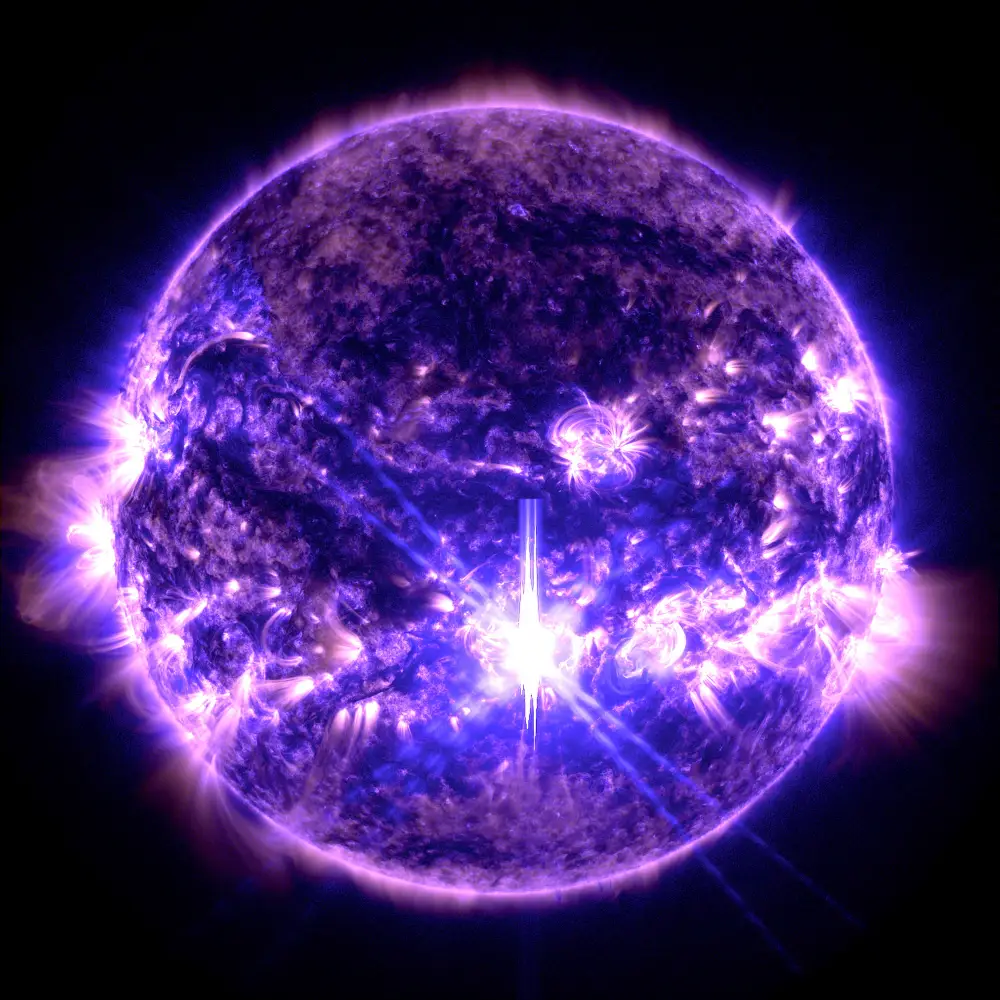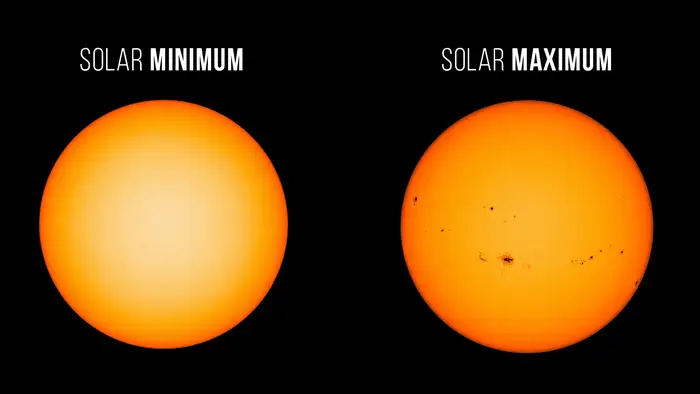The sun is at its 11-year maximum. That means another year of eruptions that can endanger satellites, ground flights, and spark stunning auroras.

The sun emits the largest solar flare of this 11-year cycle, as imaged by NASA’s Solar Dynamics Observatory on October 3.
Thanks to the sun, we’re in the middle of the best time to see the northern lights — and maybe the worst time to be a satellite.
NASA announced Tuesday that the sun is in the “maximum phase” of its 11-year solar cycle, which basically means it’s hyperactive.
Our once-quiet star has been roiling with plasma arcs and sunspots and occasionally erupting, shooting energized particles out into space — sometimes in Earth’s direction.
When those eruptions wash over our planet, they can trigger beautiful aurora unusually far from the poles, in more populated regions, like Arizona or California.

Northern lights seen in Shreveport, Louisiana.
But solar eruptions can also endanger satellites, astronauts, and even power grids here on Earth.
NASA expects a lot of those explosions in the next six months to a year along with the geomagnetic storms they cause in Earth’s upper atmosphere. That’s how much longer the sun will likely be at maximum, but there’s still potential for big eruptions in the ensuing years as the sun winds down.
“We anticipate additional solar and geomagnetic storms leading to opportunities to spot aurora over the next several months, as well as potential technology impacts,” Kelly Korreck, a program scientist in NASA’s Heliophysics Division, said during the announcement on Tuesday.
The problem with the aurora
Solar eruptions, like solar flares or coronal mass ejections, don’t directly harm anyone on Earth, but they disrupt a layer of the upper atmosphere called the ionosphere.
Some technologies, such as GPS and high-frequency radios used for navigation, rely on the ionosphere and experience blackouts during some solar storms.
That can delay flights, since planes use both satellite and radio communications. Indeed, a 2023 study found that flights were 21% more likely to be delayed by at least 30 minutes during solar storms.
Solar storms can also push satellites out of orbit.
In very severe cases, solar storms can affect power grids. In 1989, a geomagnetic storm wiped out Quebec’s electricity and caused other power-system issues in the US, UK, and Sweden.
Nothing that major has happened in a while. But this solar maximum has been one for the books. In May, an extreme geomagnetic storm brought the northern lights as far south as Arkansas.

The northern lights, pictured through an iPhone camera near San Francisco in May 2024.
It was “the strongest solar storm to reach Earth in two decades and possibly one of the strongest displays of auroras on record in the past 500 years,” said Elsayed Talaat, the director of the Office of Space Weather Observations at the National Oceanic and Atmospheric Administration.
Unlike two decades ago, NOAA can better forecast geomagnetic storms and industries can prepare for them before they strike. Still, the May solar storm disrupted high-precision GPS that some US farmers rely on, causing about $500 million in losses, according to Bill Murtagh, a program coordinator at NOAA’s Space Weather Prediction Center.
“The bigger the storm, the more visible the aurora, the further south it’s visible. At the same time, we can’t be hoping for these big displays because with them comes the threat to our critical infrastructure,” Murtagh said during Tuesday’s announcement. “We always have to be careful with what we wish for. “
Why the sun is at maximum
The sun has an 11-year cycle, where it builds from a quiet, placid minimum to a roaring maximum, then dies back down.
The current solar maximum likely began in early 2023, as the sun began to display more and more sunspots, which are low-temperature regions on the sun’s surface created by concentrated magnetic field lines.

The sun at solar minimum (left, December 2019) versus solar maximum (right, August 2024) when more sunspots appear.
“There’s more sunspots emerging, the magnetic field has more chances to interact and increase the probability of having a significant geomagnetic storm,” Lisa Upton, the co-chair of the Solar Cycle 25 Prediction Panel, which is an international panel of experts who have been keeping tabs on the sun, said during the announcement on Tuesday.
NASA scientists couldn’t confirm that the sun had reached maximum until they’d seen the number of sunspots start to plateau.
“It’s by looking at the shape of that cycle, how it’s progressed so far, and how we know that solar cycle progresses from our observations of the last 25 solar cycles, that we can really say that we’re at the maximum phase now,” Upton said.
Eventually, scientists will be able to pinpoint an exact peak of the entire solar cycle, but not until many months after the maximum phase ends.






